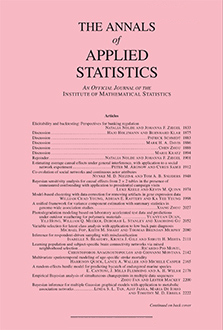Abstract
Single-particle electron microscopy is a modern technique that biophysicists employ to learn the structure of proteins. It yields data that consist of noisy random projections of the protein structure in random directions, with the added complication that the projection angles cannot be observed. In order to reconstruct a three-dimensional model, the projection directions need to be estimated by use of an ad-hoc starting estimate of the unknown particle. In this paper we propose a methodology that does not rely on knowledge of the projection angles, to construct an objective data-dependent low-resolution approximation of the unknown structure that can serve as such a starting estimate. The approach assumes that the protein admits a suitable sparse representation, and employs discrete L1-regularization (LASSO) as well as notions from shape theory to tackle the peculiar challenges involved in the associated inverse problem. We illustrate the approach by application to the reconstruction of an E. coli protein component called the Klenow fragment.
Citation
Victor M. Panaretos. Kjell Konis. "Sparse approximations of protein structure from noisy random projections." Ann. Appl. Stat. 5 (4) 2572 - 2602, December 2011. https://doi.org/10.1214/11-AOAS479
Information





